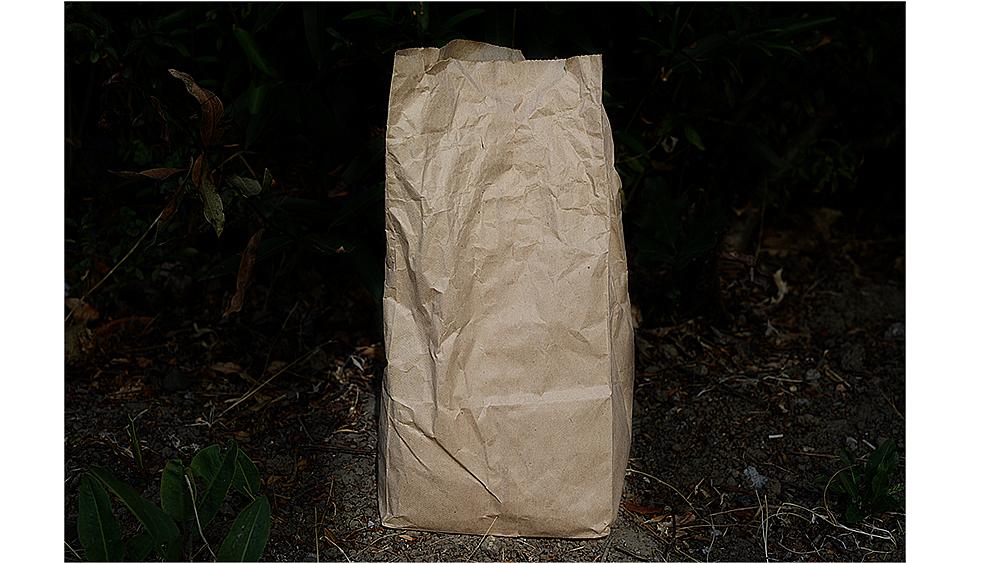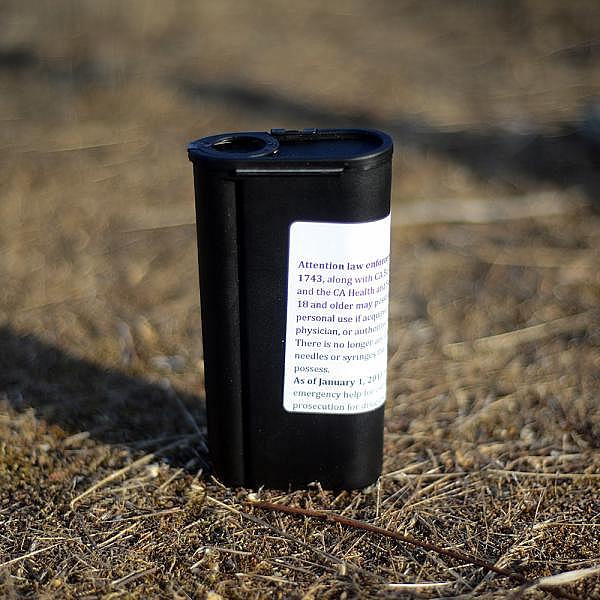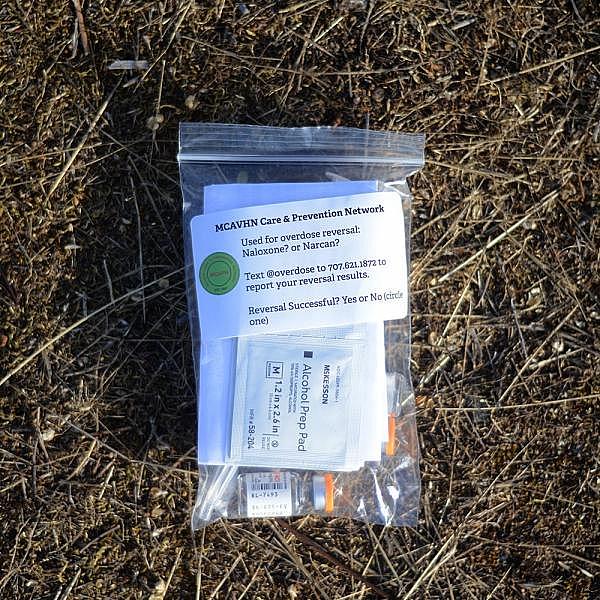What’s in a harm reduction kit, anyway?
Dana Ullman is reporting health-related stories for The Mendocino Voice with support from the USC Annenberg Center for Health Journalism. This article was produced as a series for the 2021 Center for Health Journalism California Fellowship.
Her other stories include:
In Covelo, COVID clinics expand to reach more communities across Mendo
Share your pregnancy story: have you recently had a baby or support someone who has?
A ‘silver lining:’ Promotores de Salud fill gaps in public health response through community trust
Our resource guide for harm reduction and drug treatment services in Mendocino County
For birthing parents on the Mendocino Coast, labor and delivery centers are a disappearing act


MENDOCINO Co., 8/31/21 — The National Harm Reduction Coalition, a national advocacy organization, describes harm reduction as both a model and a movement. Harm reduction uses a variety of strategies to address the negative consequences of active drug use; those strategies may range from syringe exchange to housing help, from counseling services to drug treatment.
The only syringe exchange program in Mendocino County, MCAVHN Care and Prevention Network, offers a spectrum of harm reduction and support services for active and former drug users and their loved ones.
For anyone who knocks on MCAVHN’s door or encounters the outreach team, the brown bag “starter kit” holds life-saving components. Shawn Horn, an outreach and harm reduction services provider for MCAVHN, explains the components of a typical kit.
What is the black box used for?
That inconspicuous black box is a travel-size sharps container for used syringes. The sticker reads CA Law AB 1743, which allows anyone over 18 to possess syringes and AB 472, California’s 911 Good Samaritan law, which provides limited protection from arrest, charge, and prosecution for people seeking emergency services because they are experiencing a drug overdose or assisting a person overdosing.
“We have these black boxes for the police. It says to the client, ‘Hey, as long as you keep your dirty syringes in this and bring them back you can’t be charged. [The police] can’t even ask you ‘What were these needles used for?’”
Syringes, Bags, Tourniquets… But Why so Many?

Each kit comes with multiple one-time use necessities. “So people don’t share. We don’t want people to share anything,” Horn explains.
“So these [bags] are meant for one person, but I know some people will still give a syringe to somebody, so I always give extra. We give them tourniquets. And [for syringes] it depends on what size they want. We have 28, 29, 30, 31 gauge. The most common is the 31 gauge. The differences in gauges are the size and length of the needle.”
People have preferences. “Some people come in and they go ‘Hey, give me some of the harpoons, the 27s, 28s because I have deep veins.’ When their veins are so blown out, it’s hard to find one.”
What is Naloxone?
Naloxone is a medicine that can be administered by anyone to reverse the effects of an overdose.
“… [Naloxone is] the same thing that the EMTs use,” Horn explains. “The most important thing is getting it to as many people as possible. I pushed it like a drug dealer when I got here, I’d ask ‘You need more naloxone?’ and they’d say ‘No, I still got some from the last time you gave it to me.’
As an opioid antagonist, naloxone blocks and reverses the effects of other opioids including heroin, morphine, fentanyl, hydrocodone (Vicodin®), oxycodone (OxyContin®), and codeine. Naloxone can be inhaled as a nasal spray or injected into a person overdosing.
“I tell people who come in who say ‘I don’t do heroin’ – Well, I’m sure you know someone who does do heroin or could be walking by someone who needs a shot.”
Naloxone cannot be used for substance use disorders and has no effect on someone with no opioids in their system. “You can’t get high on it, I could take that right now, put it in a syringe, put it in my leg and it’s going to do nothing to me. It’s an opioid blocker.”
Horn explains that a dose of naloxone given by a nasal inhaler versus an injectable is quicker acting, but that comes with a downside. “The nasal is quicker reacting, but you have less of a window for them to go back into OD’ing. The naloxone [which is injectable] has an eight-hour window. If they come out [of the overdose], they aren’t going to go in for at least 8 hours.”
Horn continues, “We tell people, `Hey, this isn’t a save your life, don’t call the EMTs thing.’ They need to call the EMTs no matter what. The Good Samaritan Act in a nutshell states that if somebody’s OD’ing and you have to call an ambulance that [law enforcement] can’t ask questions. They can’t charge you for the drugs; they can’t charge people in the room for the drugs. I tell people to call an ambulance and don’t forget to let them know the amount of [naloxone] doses that you gave them.”
Each vial has a unique id number, which MCAVHN uses to measure data. “We want their first and last initial, their date of birth, gender and ethnicity,” Horn says. “We might go further and ask questions like: Is this primarily to keep yourself or others well? What happened to the last dose? If you used it, was the reversal successful?” MCAVHN also keeps data on the drug source that caused the overdose.
How to get support:
To access free naloxone, contact MCAVHN or visit Safe Rx Mendocino Opioid Safety Coalition: https://www.saferxmendocino.com/en/how-to-get-naloxone
If you or someone you know needs is interested in harm reduction services, contact MCAVHN at (707) 462-1932 or drop in at 148 Clara Avenue in Ukiah Monday-Friday 9am-12pm.
For additional information on support resources for substance use disorder:
– Safe Rx Mendocino Opioid Safety Coalition: https://www.saferxmendocino.com/en/getting-help
– Mendocino County Substance Use Disorder Treatment (SUDT), 707-472-2637
Dana Ullman reports on health-related stories for The Mendocino Voice with support from the USC Annenberg Center for Health Journalism. This article was produced as a series for the 2021 Center for Health Journalism California Fellowship.
[This article was originally published by The Mendocino Voice.].

